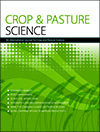Global change greatly challenge the maize (Zea mays L.) systems, and crop modelling could provide comprehensive assessment on the impacts of climate change. We investigated the effects of projected future climate on maize yield, climate risks and growth stage transitions in the East-Central Texas (ECT), indicating that yield could maintain historical level in most cases with shorten seasons and higher risk. Extending maize growing season, choosing soil with low-sand level and supplement of irrigation in ECT have greater impact in moderating risk.
CP21279 Abstract | CP21279 Full Text | CP21279PDF (3.7 MB) Open Access Article





